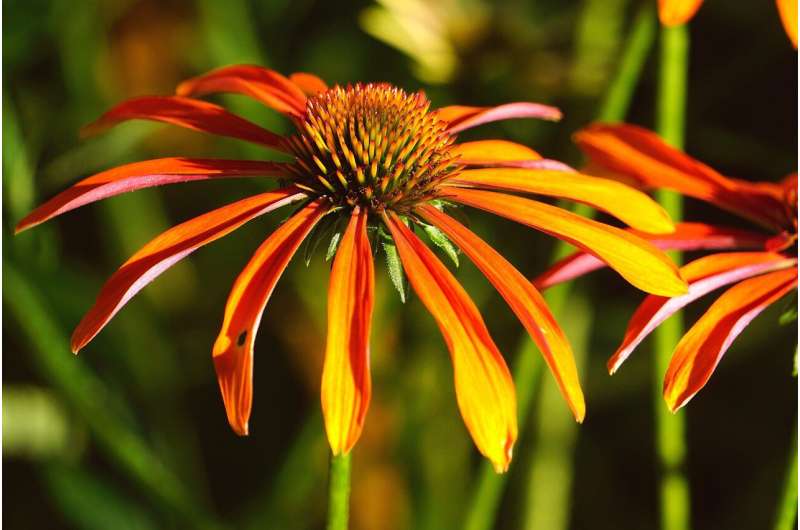This article has been reviewed according to Science X's editorial process and policies. Editors have highlighted the following attributes while ensuring the content's credibility:
fact-checked
trusted source
proofread
Decoding Darwin's abominable mystery: The diverse origin of flowering plants

In a quest to unravel Charles Darwin's enigmatic "abominable mystery," a team of scientists from The University of Western Australia has embarked on a ground-breaking study of flowering plants that thrived approximately 125 million years ago.
The "abominable mystery" refers to a puzzle that the English naturalist and biologist was intrigued by but could not fully explain during his lifetime—the rapid rise and diversification of flowering plants (angiosperms) in fossil records.
Darwin recognized that flowering plants appeared relatively late in Earth's history, but once they emerged, they quickly became the dominant group, occupying various habitats and displaying remarkable diversity.
Although he proposed several hypotheses, such as the idea that insects played a role in pollination and the development of co-evolutionary relationships, he was unable to fully unravel the mystery during his lifetime.
The UWA study, published in the journal Earth-Science Reviews, focused on examining the pollen produced by plants in the Arabian Plate, an area known for its rich floral diversity during the early stages of flowering plant evolution.
Lead author Ph.D. candidate Hani Boukhamsin, from UWA's Center of Energy and Climate Geoscience at the School of Earth Sciences, said researchers wanted to explore the connection between the geography of this region and the high diversity of flowering plants during that time.
"We found that islands and archipelagos in the Arabian Plate played a significant role in the speciation and spread of flowering plants and we proposed two models to explain this sudden radiation of flowering plants: the insular model and the wet centers of diversification," Mr. Boukhamsin said.
"According to the insular model, migratory birds and flying reptiles played a crucial role in dispersing the seeds of flowering plants to the islands with small seeds sticking to the birds' feet, skin, or being carried in their digestive system—and changes in sea levels influencing the migratory pathways.
"The second model suggests that lakes and water bodies along the Arabian coast acted as 'wet islands' in a terrestrial setting, with these areas colonized by aquatic flowering plants and influenced by changes in sea level and serving as continuous sources of diversity for flowering plants."
Dr. Daniel Peyrot, from the UWA School of Earth Sciences, said the research emphasized the importance of analyzing fossilized spores and pollen, a field called palynology, in understanding the history and propagation of plants on Earth.
"By studying these ancient pollen samples, scientists can gain valuable insights into how plants have evolved and spread over time," Dr. Peyrot said.
More information: Hani Boukhamsin et al, Early Cretaceous angiosperm radiation in northeastern Gondwana: Insights from island biogeography theory, Earth-Science Reviews (2023). DOI: 10.1016/j.earscirev.2023.104454
Provided by University of Western Australia





















